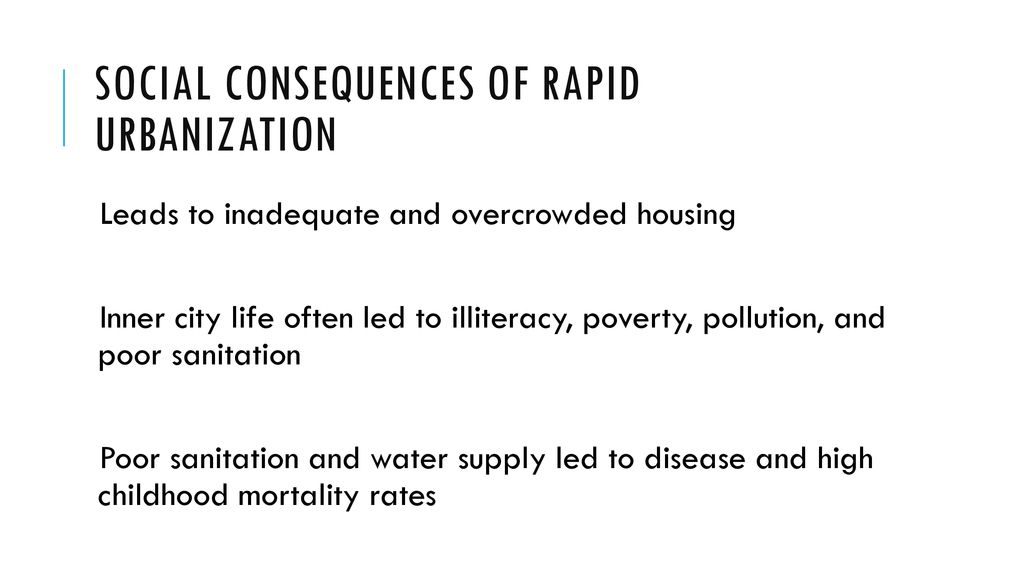Relevance: Sociology Paper II: urbanization
Model Answer:
Urbanization is the movement of people from rural to urban areas, thereby increasing the concentration of population in urban areas. In economic terms, it refers to movement of people from agriculture based community to other communities which are generally larger and whose primary economic activities are centered in government, trade, manufacturing and allied activities. Urbanization is multidimensional process which not only involves changes in place of residence and economic activities but also results in changes in the migrant’s belief, attitudes and behavior patterns.
Urbanization in India has fairly long history dating back to the period of Indus Valley Civilization. Urban centres grew up in various periods of history including medieval period. During the British period Urbanization was primarily for governmental requirements or for facilitating trade outside India. However these centres were limited and most of the population resided in villages. As per 1901 census only 10.8% population lived in cities, according to 1951, 17.3%, 2001 it was 27.81% and 2011 census report it is 31.16% population residing in cities. The above data indicates that pace of urbanization increased after independence.
Urbanization refers to migration of people from rural to urban areas. It can be due to two factors:
1) push factor, 2) pull factor. Push factor implies that people move from villages to avoid poor quality of life in villages and pull factor indicates that people are attracted towards cities for better life.
Although combination of both these factors results into urbanization but in context of India push factor dominates. The reason for the same is increase in population which led to decline in the size of agricultural land holdings and in some cases reduction is to such an extent that people is not able to support their family.

Urbanization is usually seen as an indicator of development as it indicates that more and more people are engaged in secondary and tertiary economic activities. Unfortunately this is not the case in India.
Here the government while prioritizing industry has failed to maintain its equitable geographical distribution. This has created some industrial pockets which required more and more worker while rest of the country lacks reasonable employment opportunities. The urbanization in India has been lopsided and therefore has come with several problems.
The push factors have created an exodus from village. As no systematic effort was made to develop industries in smaller towns which could provide employment to these people this group landed in cities which were not geared up to provide even basic facilities to these people.
First requirement of these migrants was accommodation and when the city could not meet their demands, slums came up in cities, in which people lived in highly dilapidated situation. Slums have invariably extreme unhygienic conditions. Lack of drinking water, culture of open defecation, lack of drains etc. these makes its inhabitants vulnerable to a host of diseases.
Secondly, Due to distress migration, it impacts the demography of both source and destination region i.e. more number of dependent population in source region and skewed sex ratio in destination region( giving rise to crime against women).
Moreover, since the aspirations of many remain unmet, it leads to many deviant activities. Due to lack of sufficient employment opportunities, it also leads to emergence of politics of nativism.
Urbanization also drains the source region of skilled and educated population. Moreover, it leads to breakdown of families, depriving society of agency of social control.
There is a significant urge to cater to the problems associated with urbanization on priority basis. Hence first of all we need to develop our infrastructure so as to accommodate the needs of migrating population.
Secondly, administration of cities is the responsibility of municipalities which lack expertise to deal with the rapid changing scenario hence the aim should be to develop dedicated cadre of city managers to ensure efficient administration.
Thirdly stress should be laid on long term planning and short term goal satisfaction should not be the aim every time. Awareness should be created among people and ensure greater participation.
Government should aim to develop alternative employment opportunities in rural areas, develop agriculture based small scale industries and ensure balanced regional development.
Moreover small towns needs to be focused upon so as to ensure there is balanced urbanization and for this industries using local resources should be developed in small towns which will provide better quality of life in towns.
The proposed solution is not impossible to achieve. With proper planning, requisite political will, efficient administration we can ensure that even in context of India urbanization proves to be an indicator of development.
But urbanization also has its positives, as it leads to more employment opportunities for people, increases them awareness due to urban setting. It also provides them with access to education facilities, which are generally missing or poor in rural areas; provides them with access to health care.


